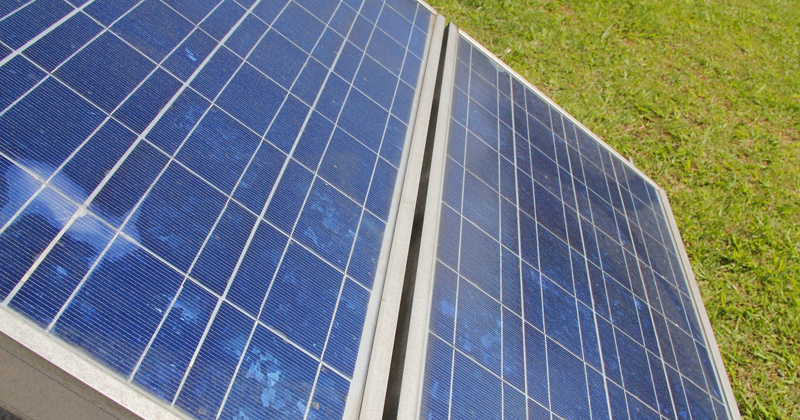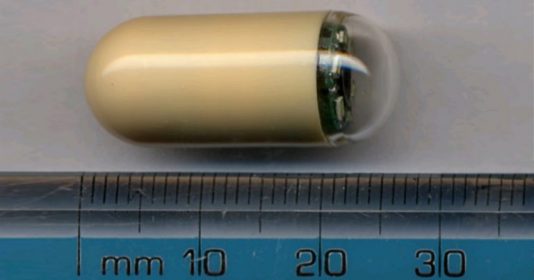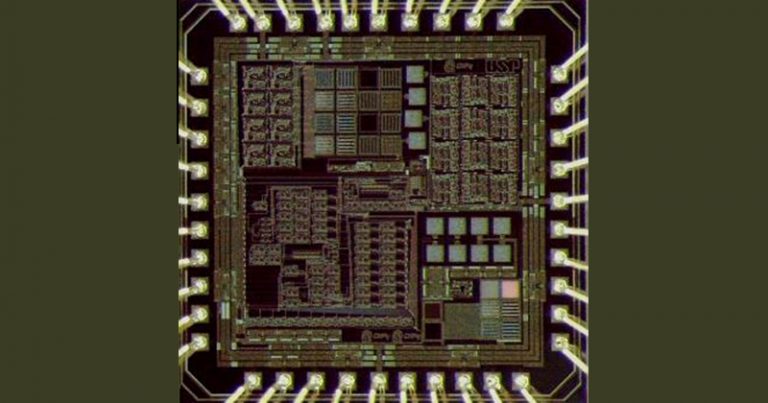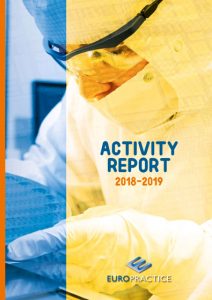
A microchip of five square millimeters, the size of a match head, capable of operating several useful systems in the industry and in medicine, was developed in a research of the School of Engineering of São Carlos (EESC) of USP. Equipped with a set of sensors and transmitters, the microchip can be used to direct photovoltaic panels, increasing the uptake of sunlight and energy production in implantable devices for diagnosing gastrointestinal problems and in disease detection. The microchip is mentioned in the 2018 Europractice report, a worldwide benchmark in the field of microelectronics.

“The microchip consists of several internal blocks, each of them responsible for the operation of a certain system,” says Professor João Paulo Pereira do Carmo, from the Group of Metamaterials, Microwaves, and Optics (GMETA) of the Department of Electrical and Computer Engineering (SEL) of EESC, who coordinated the research. “One of the blocks is a sensor that measures the angle of incidence of sunlight, which enables following the movement of the sun and directing photovoltaic panels, increasing the efficiency in energy production.”
Medical devices
Another microchip block has a transceiver (emitter and receiver) of infrared light for use in implantable medical devices. “The purpose of the transceiver is to enable communication between devices and external equipment,” says Pereira do Carmo. An example of application are the endoscopic capsules, tablet-shaped devices that take pictures of the stomach and intestine, which are transmitted to a receptor.
“In recent years, there is a growing interest in the capsules, as they examine the whole gastrointestinal tract in a painless and minimally invasive way,” says the professor. The transceiver, besides having a photodetector, operates with transmission rates of 10 megabit per second, not achieved by the traditional radio frequency transmission. “This way, it can transmit, in the same time interval, more images with the same resolution, or a smaller but higher-resolution amount.”
The microchip is also equipped with a programmable code generator system, used to transmit data. “The system can be used on several applications,” explains Pereira do Carmo, “mainly on the scattering of digital communications, making the transmission less exposed to errors, and on platforms of chemical sensors, project that is currently in the final stages in GMETA.”
Detecting viruses
Finally, Pereira do Carmo points out that the microchip internally has an operational amplifier. “This amplifier, which has low power consumption, was designed for data acquisition systems,” he says. “In the future, if the characterization tests validate the specifications, the idea is to manufacture a new microchip by reusing several amplifiers to integrate all the blocks of a laboratory platform for detecting hepatitis C virus, based on the Master’s degree project by PhD student João Paulo Campos da Costa.”
The research with the microchip in CMOS technology of 0.7 micrometers (μm), of ON Semiconductor (formerly Alcatel-MIETEC), coordinated by Professor João Paulo Pereira do Carmo, was conducted by the graduate students in electrical engineering of EESC João Paulo de Campos da Costa, Rodrigo Henrique Gounella, and Tiago Matheus Nordi. The group’s research is funded by the National Council for Scientific and Technological Development (CNPq).


The microchip is mentioned in the 2018 Europractice report, prototyping service of scientific projects of the Interuniversitair Micro-Electronica Centrum (IMEC), one of the leading international research centers in microelectronics. “GMETA studies have had international recognition for some years. In 2017, another microchip produced by the group was included in the Europratice report,” says the professor. “The idea is to continue with research in the field of electrical engineering, attracting students of undergraduate research, course completion work, and graduate studies, as well as post-doctoral researchers.”
More information: jcarmo@sc.usp.br, with professor João Paulo Pereira do Carmo
